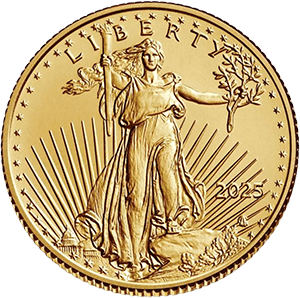Bank of America’s Global Research division has released one of the boldest forecasts in today’s precious-metals market: gold reaching $5,000 per ounce and silver climbing to $65 per ounce by 2026. This call, coming from one of the world’s largest financial institutions, signals a major shift in how Wall Street views hard assets, inflation, and global financial stability.
In this detailed breakdown, we explore why Bank of America is so bullish, how this compares to other major outlooks, and what it means for investors—especially those who prefer physical gold and silver over paper exposure.
Why Bank of America Sees Gold at $5,000 by 2026
Bank of America’s upgraded 2026 outlook points to several strengthening forces that could drive gold dramatically higher over the next 12–24 months. These factors align with long-term themes that have historically preceded major gold bull markets.
1. Rising Global Debt and Persistent Fiscal Deficits
Governments worldwide are running large and sustained deficits, with debt-to-GDP levels reaching record highs. According to BofA analysts, this creates:
-
Long-term currency debasement risk
-
Higher structural inflation
-
Increased demand for real-asset hedging
Gold historically performs best when confidence in fiat currency declines—a trend that is accelerating today.
2. Central Banks Are Buying Record Amounts of Gold
Central banks purchased their highest volume of gold in decades throughout 2023–2025. This strategic shift away from the U.S. dollar supports a long-term floor under gold prices and signals that global institutions view gold as essential for sovereign stability, especially in a shifting geopolitical landscape.
3. Safe-Haven Demand Due to Global Tension and Policy Volatility
BofA highlights a trio of risks pushing investors into hard assets:
-
Geopolitical conflict and global realignment
-
Monetary-policy uncertainty
-
Slowing global economic growth
During periods of instability, demand for physical precious metals historically surges.
4. Underinvestment in Gold Despite New Record Highs
Even with gold surpassing $4,000/oz in 2025, BofA notes that institutional portfolios remain underweight gold. This means:
-
Higher prices have not scared away buyers
-
There remains significant room for additional inflows
-
Gold’s rally is still in its early-to-mid stages
Underallocated markets often experience the fastest price acceleration when sentiment shifts.
Why Silver Could Outperform: BofA’s Target of $65/oz
Silver’s forecast is just as dramatic, and Bank of America argues that silver may deliver even higher percentage gains than gold.
1. Tightening Supply and Growing Industrial Demand
Silver is used heavily in:
-
Solar cells
-
Electric vehicles (EVs)
-
Semiconductor manufacturing
-
High-end electronics
-
AI-driven data center infrastructure
Global silver demand is expected to outpace production for multiple consecutive years, creating structural supply deficits that historically lead to explosive price behavior.
2. Monetary Demand Mirrors Gold’s Trend
Silver has a unique dual role—industrial metal and monetary metal.
When gold enters a breakout cycle, silver typically follows with:
-
Higher volatility
-
Faster upside
-
Stronger retail investor interest
This is why silver is often referred to as “gold’s high-octane counterpart.”
3. Liquidity Stress in Global Silver Markets
Physical silver shortages have become more frequent, with London and U.S. vaults reporting tightness. Lower available inventory means small surges in demand can push prices dramatically higher.
How BofA’s Forecast Compares to Other Major Institutions
Bank of America isn’t alone in predicting higher precious-metals prices.
Other institutions have raised their outlooks as well:
-
HSBC: Gold at $4,600–$5,000 by 2026
-
Société Générale: Gold north of $4,500 if deficits persist
-
Morgan Stanley & Goldman Sachs: Higher long-term gold allocations recommended
-
Metals research firms: Silver in the $50–$70 range based on supply deficits
The trend is clear:
Wall Street finally recognizes the long-term fundamental strength of physical gold and silver.
Key Risks to the Forecast (What Could Prevent $5,000 Gold)
No forecast is guaranteed. Bank of America notes that precious metals could face headwinds if:
-
The Federal Reserve keeps rates high for longer
-
Inflation cools faster than expected
-
Geopolitical tensions significantly de-escalate
-
Investors rotate back into growth and tech stocks
However, even modest pullbacks are viewed as part of a long-term structural uptrend, not as a reversal of the bullish cycle.
What This Means for Precious-Metals Investors
For investors—especially those considering physical gold, physical silver, or Precious Metals IRAs—Bank of America’s forecast highlights several key takeaways:
1. Tangible Precious Metals Reduce Exposure to Currency Risk
In an era of rising deficits, political instability, and monetary experimentation, physical metals provide:
-
Store-of-value protection
-
Diversification from stocks and digital assets
-
A hedge against inflation and systemic risk
2. Dollar-Cost Averaging Helps Smooth Volatility
Because prices can be volatile, many investors prefer consistent allocations rather than trying to time the market—especially with predictions this large.
3. Precious Metals IRAs Are Becoming Mainstream
With banks projecting record-high gold and silver prices, more Americans are diversifying retirement accounts into:
-
IRS-approved gold
-
IRS-approved silver
-
Self-directed Precious Metals IRAs
This trend is accelerating heading into 2026.
Final Thoughts
Bank of America’s prediction of $5,000 gold and $65 silver by 2026 reflects a fundamental shift in global finance. Between rising debt, monetary uncertainty, geopolitical tension, and growing demand for tangible assets, the long-term case for precious metals is stronger than ever.
Even if prices don’t hit those exact targets, the message from major banks is unmistakable:
Gold and silver are once again at the center of the global conversation about wealth protection, stability, and long-term portfolio strategy.











